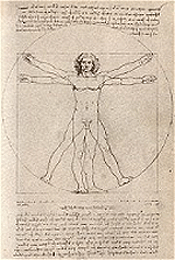Alcohol Properties
Alcohol, like any drug, has distinct properties that affect human beings in different ways--as the following article shows. Sometimes, understanding the way alcohol works and is metabolized by the human body can be a key to a defense attorney winning a DUI or DWI case. That's why it is important to hire a lawyer that is knowledgeable about alcohol and its properties. Consider hiring one of America's DUI and DWI Defense Attorneys to represent you.
![]()
 Alcohol's Properties1
Alcohol's Properties1
Alcohol is a general term denoting a family of organic chemicals with common properties. Members of this family include ethanol, methanol, isopropanol and others. This introduction discusses the physical, chemical and physiological aspects of the most commonly ingested of these - ethanol.
Alcohol (ethanol) is a clear, volatile liquid that burns (oxidizes) easily. It has a slight, characteristic odor and is soluble in water. Alcohol is an organic compound composed of carbon, oxygen and hydrogen; its chemical formula is C2H5OH. It is a central nervous system depressant and it is the central nervous system which is the body´s most severely affected by alcohol (see chart below). The degree to which the central nervous system function is impaired is somewhat proportional to the concentration of alcohol in the blood.2
When ingested, alcohol passes from the stomach into the small intestine, where it is rapidly absorbed into the blood and distributed throughout the body. In low concentrations, alcohol reduces inhibitions. As blood alcohol concentration increases, a person's response to stimuli decreases markedly, speech becomes slurred, and he or she becomes unsteady and has trouble walking. With very high concentrations - greater than 0.35 milligrams/100 milliliters of blood (equivalent to 0.35 grams/210 liters of breath ) - a person can become comatose and die. The following is a generally accepted guide to the affects of alcohol.
Stages of Alcohol Intoxication3
|
BAC (mg/100 ml of blood or g/210 L of breath) |
Stage |
Clinical symptoms |
|
0.01 - 0.05 |
Subclinical |
Behavior nearly normal by ordinary observation |
|
0.03 - 0.12 |
Euphoria |
Mild euphoria, sociability, talkativeness Increased self-confidence; decreased inhibitions |
|
0.09 - 0.25 |
Excitement |
Emotional instability; loss of critical judgment Impairment of perception, memory and comprehension |
|
0.18 - 0.30 |
Confusion |
Disorientation, mental confusion; dizziness |
|
0.25 - 0.40 |
Stupor |
General inertia; approaching loss of motor functions |
|
0.35 - 0.50 |
Coma |
Complete unconsciousness |
|
0.45 + |
Death |
Death from respiratory arrest |
Absorption4
Alcohol is absorbed from all parts of the gastrointestinal tract largely by simple diffusion into the blood. However the small intestine is by far the most efficient region of the gastrointestinal tract for alcohol absorption because of its very large surface area. In a fasting individual, it is generally agreed that 20% to 25% of a dose of alcohol is absorbed from the stomach, and 75% to 80% is absorbed from the small intestine. Because of this, peak blood alcohol concentrations are achieved in fasting people within 0.5 to 2.0 hours, while non-fasting people exhibit peak alcohol concentrations within 1.0 to as much as 6.0 hours.
Distribution
Alcohol has a high affinity for water and is therefore found in body tissues and fluids inasmuch as they contain water. Absorbed alcohol is rapidly carried throughout the body in the blood and once absorption of alcohol is complete an equilibrium occurs such that blood at all points in the system contains approximately the same concentration of alcohol.
Elimination
The liver is responsible for the elimination - through metabolism - of 95% of ingested alcohol from the body. The remainder of the alcohol is eliminated through excretion of alcohol in breath, urine, sweat, feces and saliva. The body uses several different metabolic pathways in its oxidation of alcohol to acetaldehyde to acetic acid to carbon dioxide and water.
Healthy people metabolize alcohol at a fairly consistent rate. As a rule of thumb, a person will eliminate one average drink or .5 oz (15 ml) of alcohol per hour. Several factors influence this rate. The rate of elimination tends to be higher when the blood alcohol concentration in the body is very high or very low. Also chronic alcoholics may (depending on liver health) metabolize alcohol at a significantly higher rate than average. Finally, the body's ability to metabolize alcohol quickly tends to diminish with age.
Body Weight and Body Type
In general, the less you weigh the more you will be affected by a given amount of alcohol. As detailed above, alcohol has a high affinity for water. Basically one's blood alcohol concentration is a function of the total amount of alcohol in one's system divided by total body water. So for two individuals with similar body compositions and different weights, the larger individual will achieve lower alcohol concentrations than the smaller one if ingesting the same amount of alcohol.
However, for people of the same weight, a well muscled individual will be less affected than someone with a higher percentage of fat since fatty tissue does not contain very much water and will not absorb very much alcohol.
Rate Of Consumption
Blood alcohol concentration depends on the amount of alcohol consumed and the rate at which the user's body metabolizes alcohol. Because the body metabolizes alcohol at a fairly constant rate (somewhat more quickly at higher and lower alcohol concentrations), ingesting alcohol at a rate higher than the rate of elimination results in a cumulative effect and an increasing blood alcohol concentration.
Alcohol Content
It's not how many drinks that you have, but how much alcohol you consumed. As you can see from the chart below some drinks are more potent than others.
Alcohol Content of Some Typical Drinks5
|
Drink |
Alcohol Content |
|
ManhattanDry |
1.15 oz. (34 ml) |
|
Martini |
1.00 oz. (30 ml) |
|
MartiniMalt liquor -12 oz. (355 ml) |
0.71 oz. (21 ml) |
|
Airline miniature |
0.70 oz. (21 ml) |
|
Whiskey Sour/Highball |
0.60 oz. (18 ml) |
|
Table Wine - 5 oz. (148 ml) |
0.55 oz. (16 ml) |
|
Beer - 12 oz. (355 ml) |
0.54 oz. (16 ml) |
|
Reduced Alcohol Beer |
0.28 oz. (8 ml |
Mixed drinks are based on typical drink recipes using 80 proof liquor.
The amount of alcohol in actual mixed drinks may vary.
Alcohol Content (in Percent) of Selected Beverages6
|
Beverage |
Alcohol Content % |
|
Beers (lager) |
3.2 - 4.0 |
|
Ales |
4.5 |
|
Porter |
6.0 |
|
Stout |
6.0 - 8.0 |
|
Malt Liquor |
3.2 - 7.0 |
|
Sake |
14.0 - 16.0 |
|
Table wines |
7.1 - 14.0 |
|
Sparkling wines |
8.0 - 14.0 |
|
Fortified wines |
14.0 - 24.0 |
|
Aromatized wines |
15.5 - 20.0 |
|
Brandies |
40.0 - 43.0 |
|
Whiskies |
40.0 - 75.0 |
|
Vodkas |
40.0 - 50.0 |
|
Gin |
40.0 - 48.5 |
|
Rum |
40.0 - 95.0 |
|
Aquavit |
35.0 - 45.0 |
|
Okolehao |
40.0 |
|
Tequila |
45.0 - 50.5 |
The concentration of the drinks that one ingests can have a slight effect on the peak alcohol concentration due to the differences in absorption rate of different concentrations of alcohol. Alcohol is most rapidly absorbed when the concentration of the drink is between 10% and 30%. Below 10% the concentration gradient in the gastrointestinal tract is low and slows absorption and the added volumes of liquid involved slow gastric emptying. On the other hand concentrations higher than 30% tend to irritate the mucous membranes of the gastrointestinal tract and the pyloric sphincter, causing increased secretion of mucous and delayed gastric emptying.
Food
Food taken along with alcohol results in a lower, delayed blood alcohol concentration peak (the point of greatest intoxication). There are two major factors involved in this phenomenon.
First, because alcohol is absorbed most efficiently in the small intestine, the ingestion of food can slow down the absorption of alcohol into one's system. The pyloric valve at the bottom of the stomach will close in order to hold food in the stomach for digestion and thus keep the alcohol from reaching the small intestine. While alcohol will be absorbed from the stomach it is a slower and less efficient transition.
Second and equally important is the fact that alcohol elimination rates are inversely proportional to alcohol concentration in the blood. Therefore, the suppressed levels of alcohol due to food ingestion cause the body to eliminate the alcohol that is absorbed at a faster rate.
The type of food ingested (carbohydrate, fat, protein) has not been shown to have a measurable influence on this affect but the larger the meal and closer in time between eating and drinking, the greater the diminution of peak alcohol concentration. Studies have shown reductions in peak alcohol concentration (as opposed to those of a fasting individual under otherwise similar circumstances) of 9% to 23%.
Medication
If you are taking any medication, it could increase the effects of alcohol. You should always consult your physician or the medical information that accompanies the medication when drinking alcohol in conjunction with any medication.
Fatigue
Fatigue causes many of the same symptoms that are caused by alcohol intoxication. These and other symptoms will be amplified if alcohol intoxication is concurrent with fatigue.
Tolerance
Tolerance is the diminution of the effectiveness of a drug after a period of prolonged or heavy use of that drug or a related drug (cross-tolerance). There are two types of tolerance at work with alcohol. The first is metabolic tolerance in which the alcohol is metabolized at a higher rate (up to 72% more quickly) in chronic users. Because of the higher metabolic rate for alcohol lower peak blood alcohol concentrations are achieved by chronic alcohol users than the average drinker when the same amount of alcohol is ingested. The second is functional tolerance in which there is an actual change in the organ or system's sensitivity to the drug. Studies have shown that chronic alcohol users can have twice the tolerance for alcohol as an average person. It is important to note, however, that even in light of these tolerance factors, it has been shown conclusively that even in heavy alcohol users functional impairment is clearly measurable at the blood alcohol concentration levels that are currently used for traffic law enforcement and safety sensitive job performance.
Gender Differences
As outlined above in the section on Body Weight and Body Type, different body types coincide with different body water percentages. In general, but by no means in all cases, women tend to have a higher percentage of body fat and thus a lower percentage of body water. Therefore, in general, if a man and a woman of the same weight ingest the same amount of alcohol the woman will tend to achieve a higher alcohol concentration. This, of course, would not be true if the woman was very fit and the man was somewhat obese, but on average, this is the case. Furthermore, total body water tends to decrease with age, so an older person will also be more affected by the same amount of alcohol. According to the table below the differences in alcohol concentration due to average body composition differences based on gender would be between 16% and 10% depending on age.
Average Total Body Water
as a function of Sex and Age
|
Age |
Male |
Female |
|
18 to 40 |
61% |
52% |
|
Over 60 |
51% |
46% |
Another gender-based difference is in the elimination of alcohol. Although not explained, studies appear to show that women eliminate alcohol from their bodies at a rate 10% greater than that of men.
Credits, Footnotes, etc...
* This article was provided/found at the web site of ©Intoximeters Inc. 1995-1999.
1 The bulk of the information on this page came from "Medicolegal Aspects of Alcohol Determination in Biological Specimens" which was edited by James C. Garriott and published by PSG Publishing Company, Inc. of Littleton, Massachusetts in 1988.
2 The sections on pharmacology are based on Chapter 2, Pharmacology of Ethyl Alcohol", by James C. Garriott.
3 More specifically, the table titled "Stages of alcohol intoxication" is from K.M. Dubowski one of the leading experts on the medicolegal aspects of alcohol use in the United States.
4 The sections relating to absorption, distribution and elimination are based on Chapter 3, "Disposition of Alcohol in Man" by Randall C. Baselt and Ivan E. Danhof.
5 The table titled "Alcohol Content of Some Typical Drinks" came from the "Blood Alcohol Estimator" which is distributed by The Traffic Institute, Northwest University and copyright 1986 Perrygraf, Los Angeles, CA 91324-3552.
6 The table "Alcohol Content (in Percent) of Selected Beverages" is from Chapter 1, "Chemistry of Alcoholic Beverages", Bill H. McAnalley.








